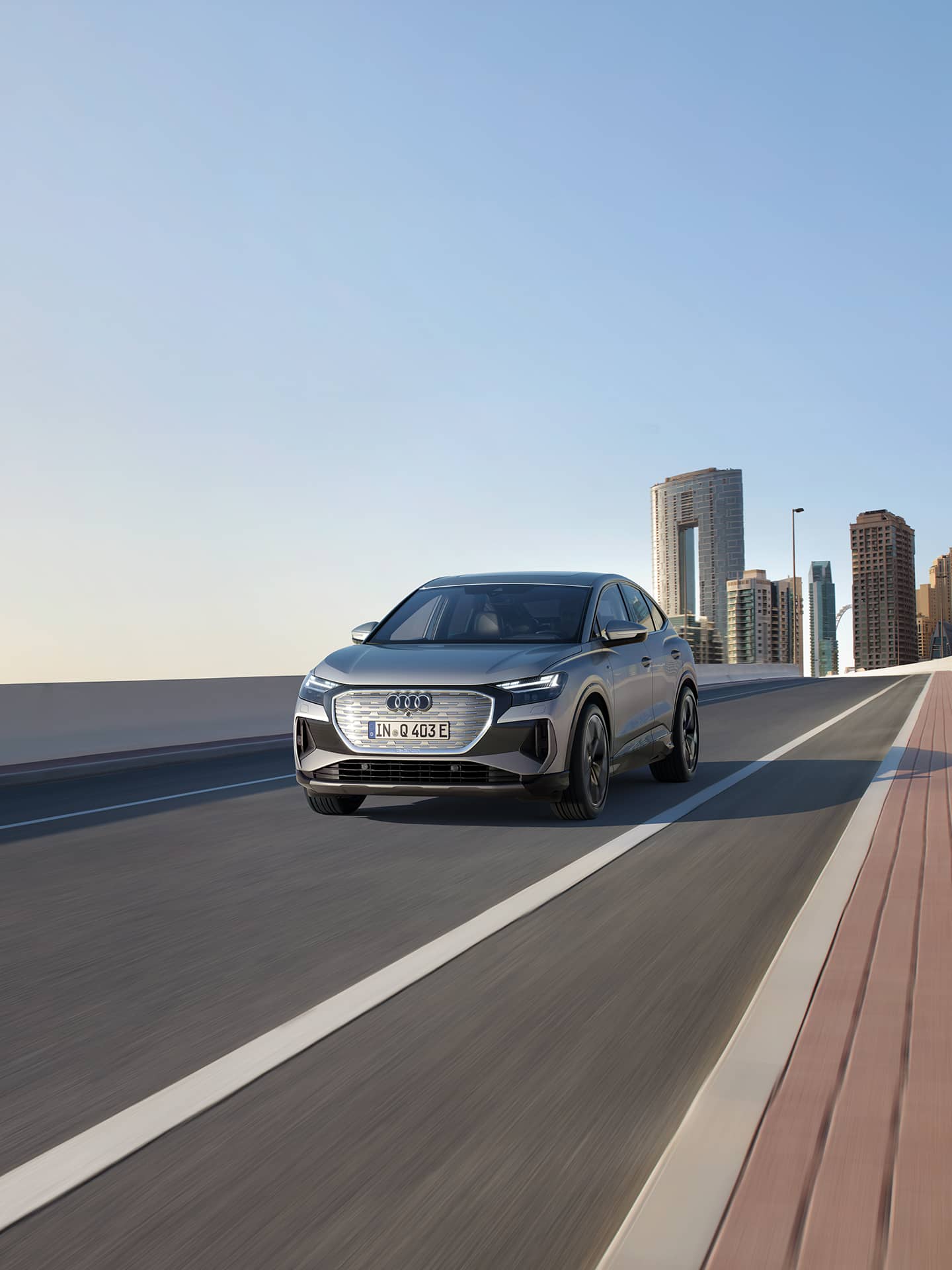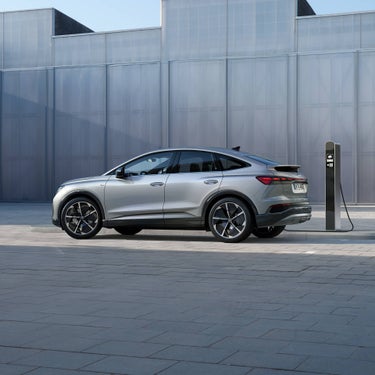Q4 Sportback e-tron
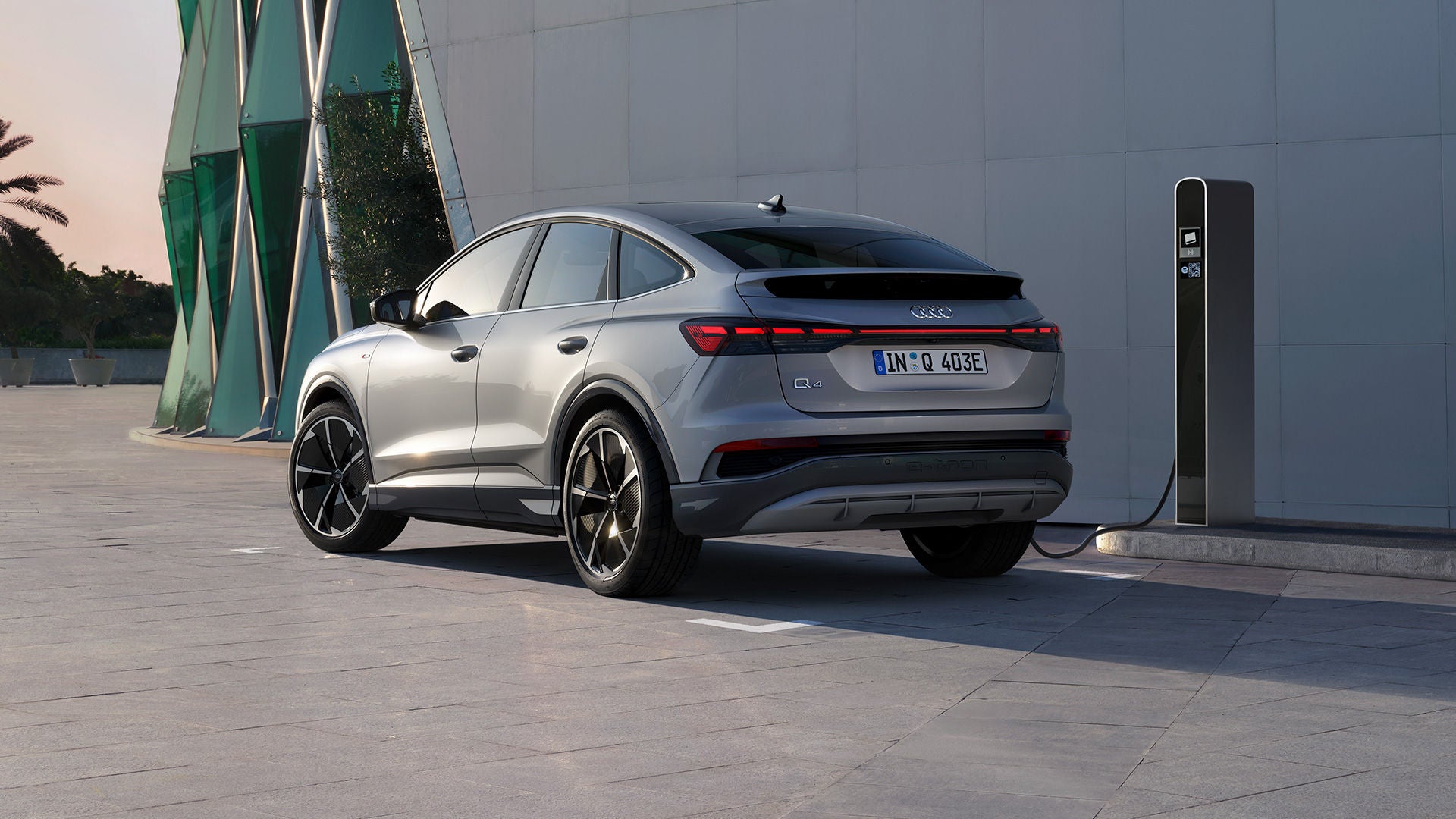
CO₂ emissions¹ in g/km: 0. Combined power consumption¹: 17.9–15.6 kWh/100 km. <br>Electrical consumption and CO₂ emission figures given in ranges depend on the equipment selected for the vehicle.
kW
s
km
- New perspective
The clear design of the Audi Q4 Sportback e-tron gives a characteristic form to the future of electric mobility. With its focused front and powerful rear.
- On your marks, get set, go
The progressive interior of the Audi Q4 Sportback e-tron is characterised by technological innovation, sportiness and functionality.
- Sportier handling
The optional sport suspension with more dynamic spring/damper setting and the vehicle lowered by 15 mm offers more direct contact with the road.
- One of a kind
In combination with the optional edition one equipment package, the Audi Q4 Sportback e-tron is an impressive vehicle from the word go.
__fa.product-highlights.skipTargetText__
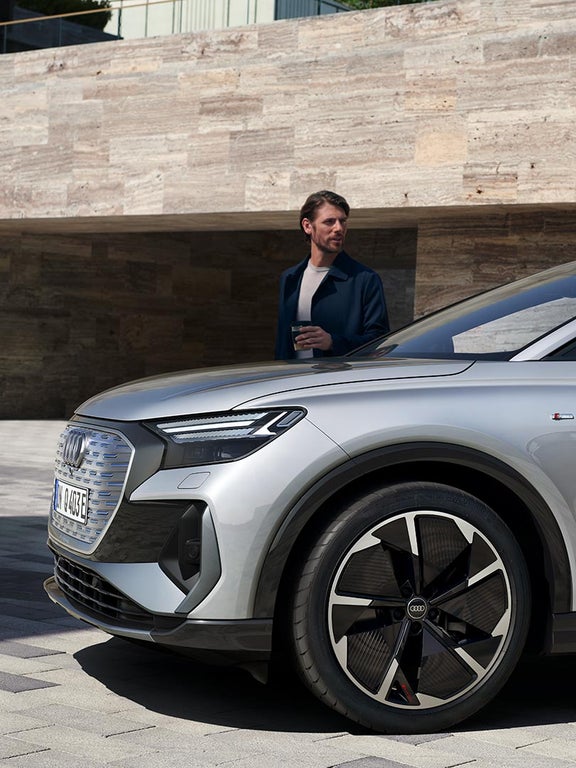
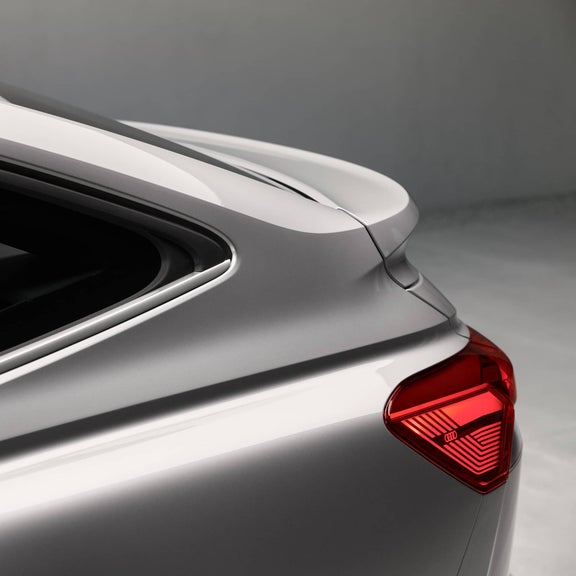



All-electric Sportback plus SUV coupé. The sporty exterior design of the Audi Q4 Sportback e-tron is fascinating at first glance thanks to its emphatically dynamic elegance.
A choice of four daytime running light signatures combined with dynamic light sequencing impressively demonstrate the progressive lighting technology.
The expressive rear of the Audi Q4 Sportback e-tron is enough to convey the vehicle’s dynamic momentum. The roof edge spoiler and the impressive form of the bumper diffuser insert with horizontal struts and illuminated e-tron logo in the centre sharpen the sporty character.
All-electric Sportback plus SUV coupé. The sporty exterior design of the Audi Q4 Sportback e-tron is fascinating at first glance thanks to its emphatically dynamic elegance.
A choice of four daytime running light signatures combined with dynamic light sequencing impressively demonstrate the progressive lighting technology.
The expressive rear of the Audi Q4 Sportback e-tron is enough to convey the vehicle’s dynamic momentum. The roof edge spoiler and the impressive form of the bumper diffuser insert with horizontal struts and illuminated e-tron logo in the centre sharpen the sporty character.
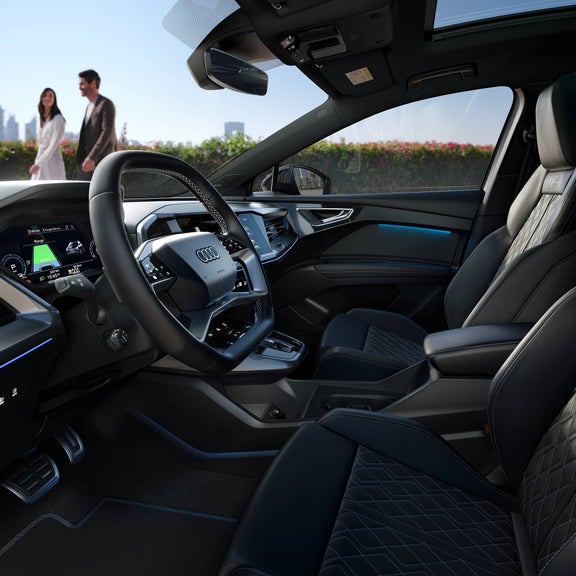
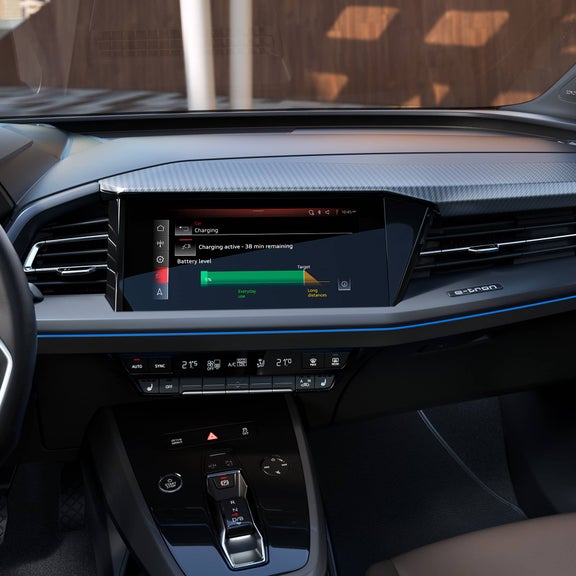


Passengers in the second row sit almost seven centimetres higher than those in front while still enjoying plenty of headroom and legroom. Audi’s compact electric SUV offers even more space thanks to its split-folding rear seat backrest, making this vehicle an ideal holiday companion.
The upper spokes of the sport leather steering wheel feature touch surfaces in black-panel look with backlit functional areas to indicate the active buttons. Slight protrusions separate these from one another, making them easier to use, and the buttons provide gentle haptic feedback when pressed.
With the augmented reality head-up display* for the Q4 Sportback e-tron, Audi is making a major step forward in display technology. It projects important information onto the windscreen at two separate levels – status and augmented reality (AR).
In the Audi Q4 Sportback e-tron, the operating and display units take on the function of design elements. The car also offers a third level of operation: natural language voice control. Thanks to the optional Audi connect* services and functions, the MMI navigation becomes a visual highlight.
Passengers in the second row sit almost seven centimetres higher than those in front while still enjoying plenty of headroom and legroom. Audi’s compact electric SUV offers even more space thanks to its split-folding rear seat backrest, making this vehicle an ideal holiday companion.
The upper spokes of the sport leather steering wheel feature touch surfaces in black-panel look with backlit functional areas to indicate the active buttons. Slight protrusions separate these from one another, making them easier to use, and the buttons provide gentle haptic feedback when pressed.
With the augmented reality head-up display* for the Q4 Sportback e-tron, Audi is making a major step forward in display technology. It projects important information onto the windscreen at two separate levels – status and augmented reality (AR).
In the Audi Q4 Sportback e-tron, the operating and display units take on the function of design elements. The car also offers a third level of operation: natural language voice control. Thanks to the optional Audi connect* services and functions, the MMI navigation becomes a visual highlight.
Passengers in the second row sit almost seven centimetres higher than those in front while still enjoying plenty of headroom and legroom. Audi’s compact electric SUV offers even more space thanks to its split-folding rear seat backrest, making this vehicle an ideal holiday companion.
min*
kWh
